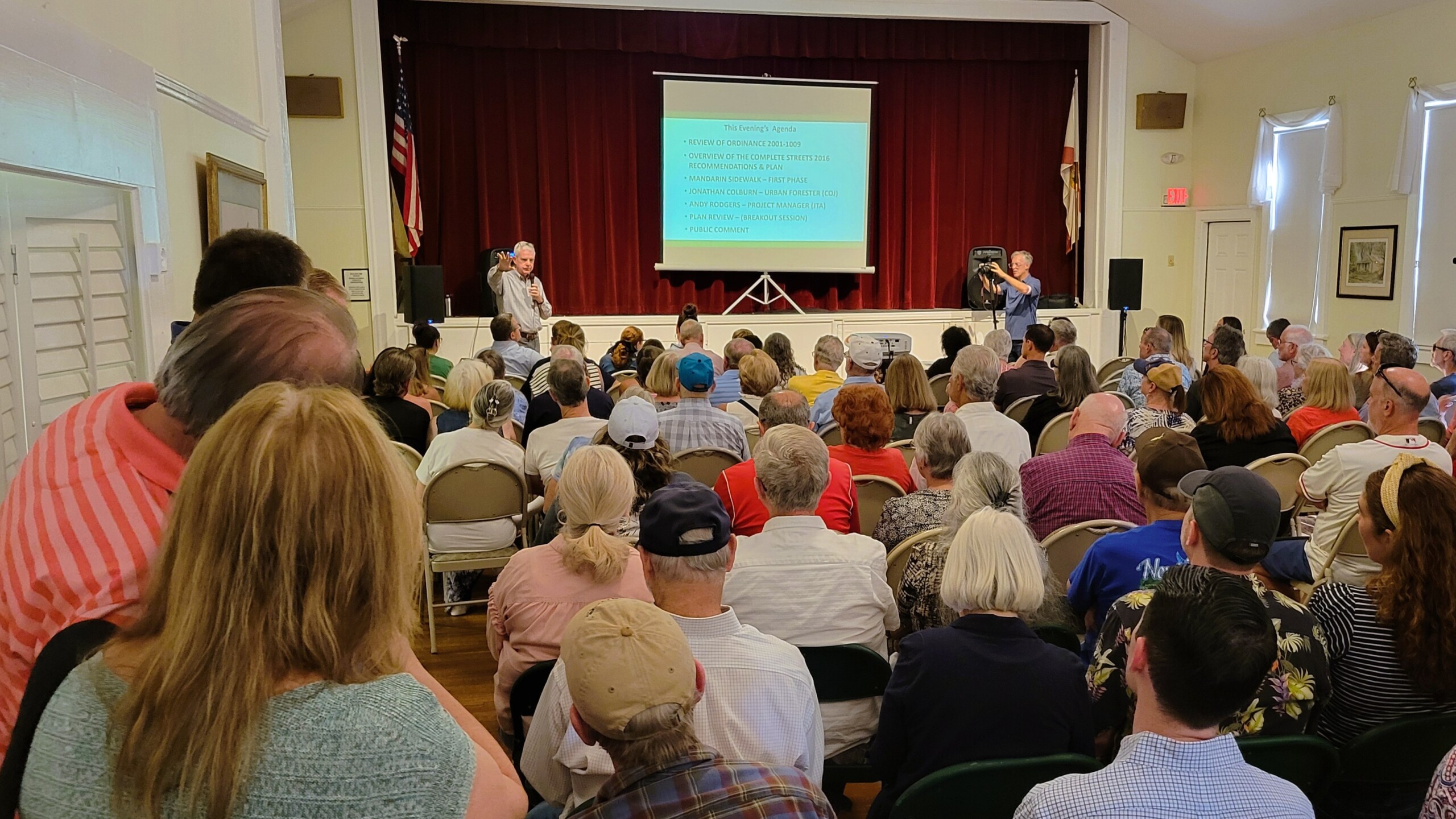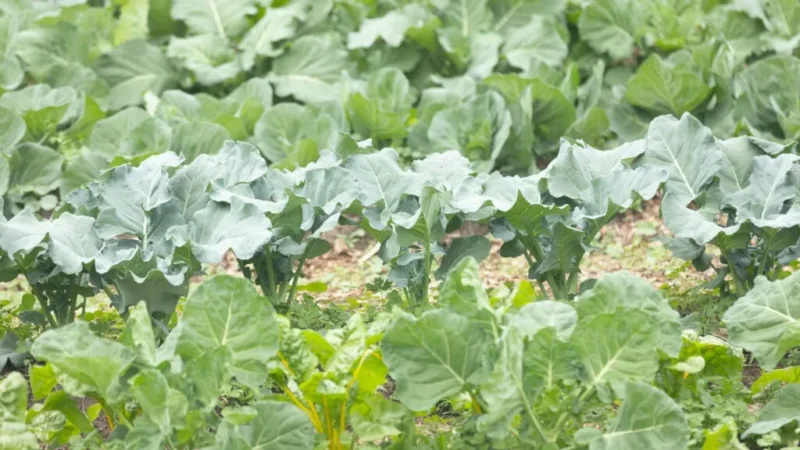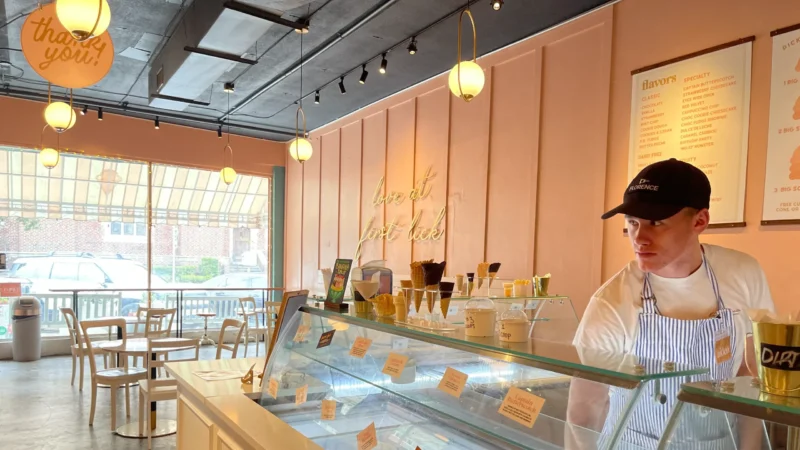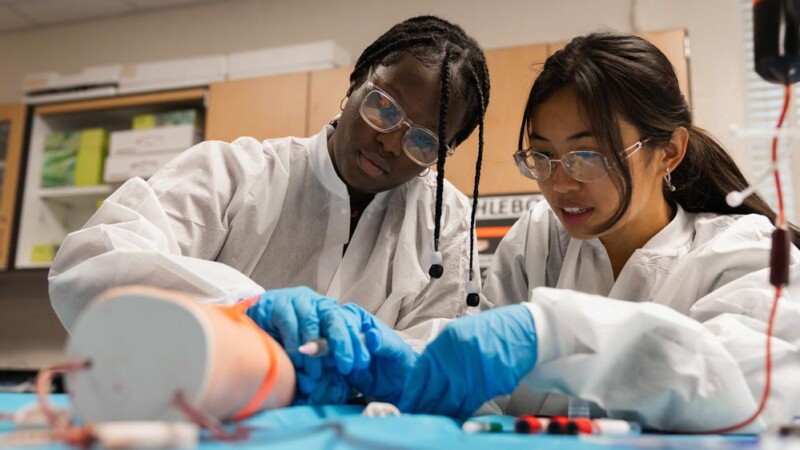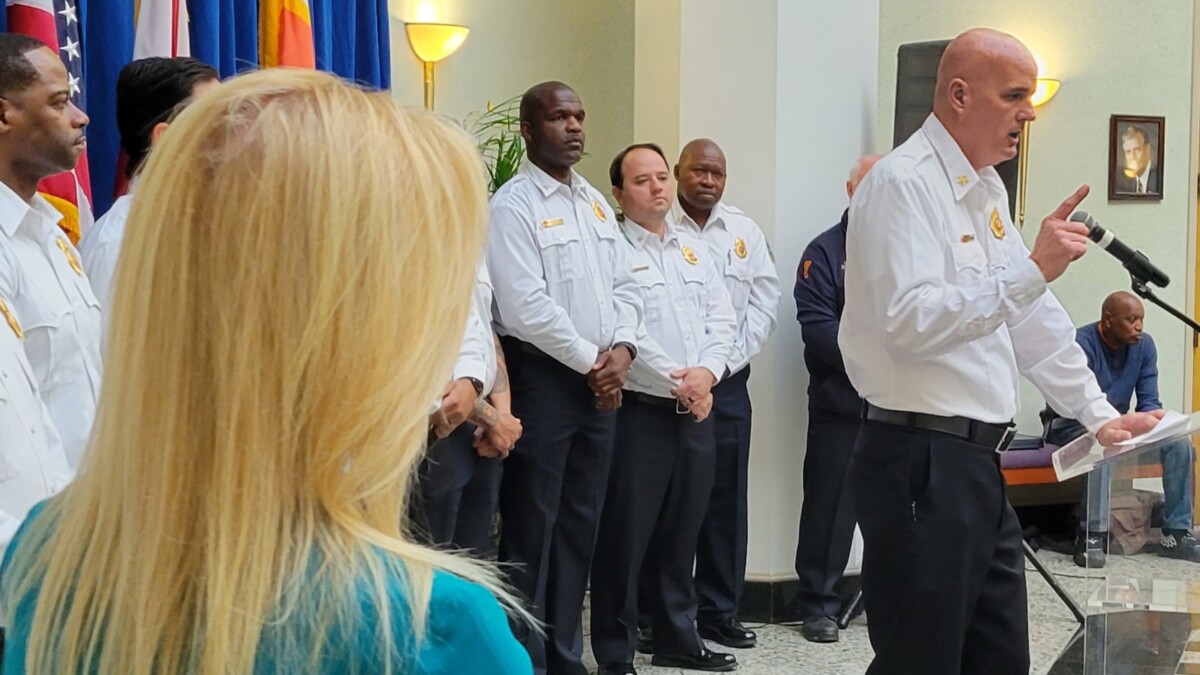More than 200 people gathered Wednesday to learn more about new sidewalks that some say are needed for pedestrian and child safety. Others believe the work could destroy the trees that give their Mandarin community its character and its shade.
Gabriele Dempsey, a Greenscape of Jacksonville board member, said residents really understand that Mandarin’s tree canopy provides shade, as well as the need for a sidewalk so they can stroll under those live oaks in safety.
“Mandarin Road has been a two-lane road for 50 years, and now we have bikes and half of St. Johns County cutting through it,” the Mandarin resident said. “They need an opportunity to be able to have a sidewalk, and I think our city is smart enough to be able to use … a variety of those elements including permeable material, even a boardwalk, so there is a way of reaching some consensus of being able to save the trees that we need to save.”
Joined by her family at Wednesday’s meeting, Kari Castleman said her children are restricted now to where they can walk or bicycle safely living near a Mandarin Road with no sidewalks.
“We need sidewalks for safety so my children can enjoy this beautiful neighborhood,” Castleman said. “They cannot go on Mandarin Road — they have to stay on our 1/10th-of-a-mile street with six houses on it.”
Mandarin Road is 6 miles long. There is a 3-mile-long sidewalk from its southern terminus at San Jose Boulevard to Red Cypress Drive, then nothing until a 1.5-mile-long sidewalk resumes at Walter Jones Historical Park and County Dock Road. It ends at the northern San Jose Boulevard intersection.
Officials of the Jacksonville Transportation Authority say the community requested the sidewalk in a city survey in 2016. The JTA project would extend a 5-foot-wide sidewalk past Red Cypress Drive to Walter Jones Park to connect with sidewalks that already exist. It would not intrude on private property.
“We will be providing a lot more details as we get into it, the specific potential conflicts, so we can come back out and be transparent with everybody of what’s going to take place,” said Edward Rogers, the JTA’s chief infrastructure officer. “First and foremost, we will be meandering the sidewalks around conflicts wherever possible as long as it doesn’t put you in the road or other safety issues. We will also be looking at different types of materials to again minimize impacts to tree roots and other factors.”
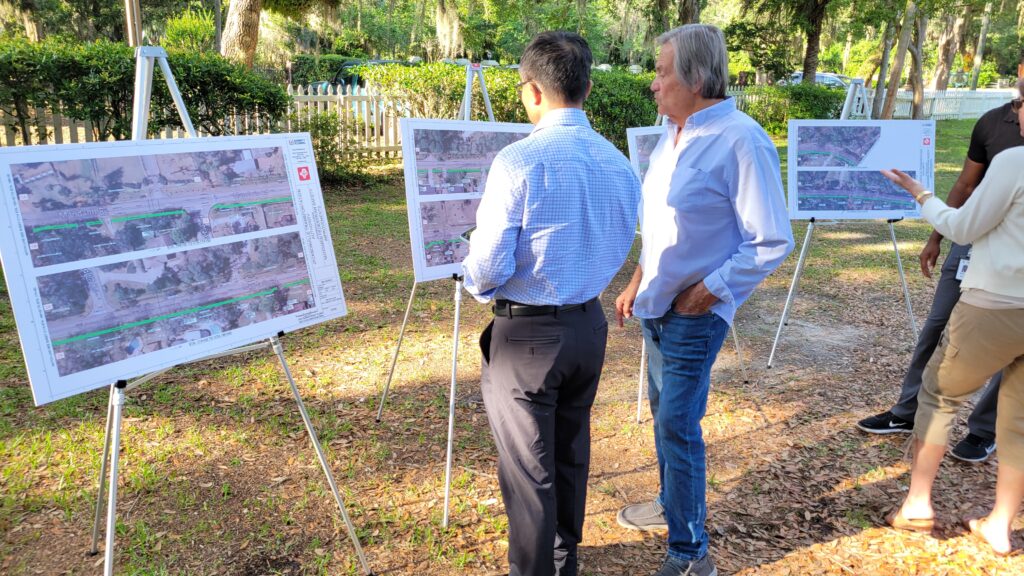
City Council member Michael Boylan, who represents Mandarin, organized Wednesday’s meeting to present information about the sidewalk project.
Speaking to the standing-room-only audience, Boylan said any work JTA does has to comply with City Ordinance 2001-1009, which designates parts of Mandarin Road as a scenic and historic corridor. That means any live oak with a diameter of 6 inches or more within 20 feet of the street right of way is protected and removal is prohibited.
Boylan said he appreciates the concern raised by some to preserve the tree canopy, but he said those who live along the road with no sidewalks deserve to get what the rest have. He also said he believes JTA will reach “a compromise that makes us feel good about the canopy” and offers safety to those who want to walk.
“It is not impossible for us to provide this kind of experience for people to walk, ride and share, and I think that is really important as part of this project process,” Boylan said.
Some at the meeting opposed the proposed sidewalk, including resident Renee Slater, whose Change.org petition against the project has over 650 signatures.
Slater fears that many trees will be knocked down or damaged to make way for the sidewalks, while some mailboxes and fences might be removed.
She wants “not one tree” touched. She said Mandarin’s natural and historic character is irreplaceable, and the sidewalk project, as proposed, threatens to alter it.

The sidewalk design is only 30% done, with a focus on preliminary identification of existing utilities, fences, landscaping and fences that might need to be removed to keep the sidewalk within right of way, JTA said. The audience was told that JTA plans to hire another arborist to help as the project moves along.
“This is the beginning,” Rogers told the audience. “We did work on the first phase up here from Orange Picker Road to Bolton Abbey Drive, so we feel like from that experience we understand a lot of the concerns. We also recognize the beauty of the existing tree canopy, so we will do everything we can to protect that.”
Another community meeting will be held in 12 to 15 months, when the design is 60% done, with more specific information, Rogers said. Another tree survey will be done before the final design, when any tree removal or relocation will be determined with an arborist’s review, JTA said.
“Specific to the trees, we will be looking at multiple options throughout design to address specific potential conflicts,” Rogers said. “There will potentially be some boardwalking around some tree roots.”
Final design should be done in 2027. Another public meeting will be held to share it and the construction schedule, and to get public feedback.
Final design and construction dates depend on funding. A total of $3.75 million is already in hand, but JTA has requested an additional $1.5 million from federal officials.



